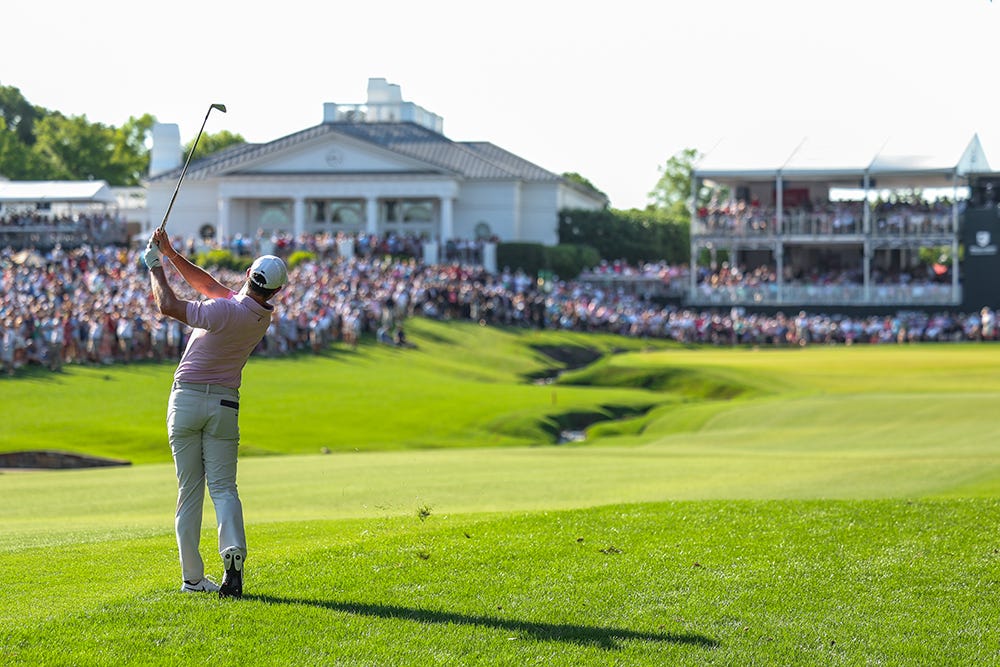Signature events sign off: how'd they do?
Only minor tweaks expected for 2025; U.S. Senior Open modifies future qualifying standards
Rory McIlroy was one of the ‘major’ winners at Quail Hollow (Andrew Redington/Getty Images)
The first year of the signature events on the PGA Tour has come and gone. For the most part, they hit the intended goals which were to bring together the best players more often, offer them huge sums of (in some cases guaranteed) money and allow for players to qualify their way in.
It’s not perfect — as if any system ever is. There was plenty of complaining — from the rank and file who believe they are being excluded; from fans who prefer larger fields and a 36-hole cut; from TV executives who might want a high-profile leaderboards.
But it’s hard to argue with a good bit of the results.
Of the eight $20 million tournaments, seven were won by previous major championship winners. Granted, Scottie Scheffler captured four of the eight, but his own story was compelling as he played against the best fields and kept knocking off victories, including his win Sunday at the Travelers Championship.
Chris Kirk, who won the season-opening Sentry back in January, is the only player who has not won a major to claim a signature title.
Wyndham Clark (2023 U.S. Open champ) won at Pebble Beach followed by Hideki Matsuyama (2021 Masters) at Riviera, Scheffler (2020 and ’24 Masters) at Bay Hill and Harbour Town and then four-time major winner Rory McIlroy (without Scheffler in the field on paternity leave) at Quail Hollow. Scheffler won again at both Muirfield Village and TPC River Highlands to finish it off.
These events, in many ways, were born out of the LIV Golf threat — cobbled together based on player input as “designated enhanced events” in 2023 before being trimmed down to the exclusive field signature events this season. It was a way to direct guaranteed money to the top players by allowing the best from the previous year to qualify for a series of eight tournaments, five of which do not have a cut. That means guaranteed pay, something at the root of golf’s woes today.
The idea was also to bring more of the top PGA Tour players together more frequently. Of course, that is potentially at the expense of tournaments that are not the majors, Players or the eight signature events. Then again, if you want to assure that the best compete against each other more often, why not have fewer tournaments on the tour schedule? Good luck with that pitch.
So how can they improve these tournaments in 2025 and beyond? The PGA Tour’s Player Advisory Council is mulling over some big broad-brush ideas according to a report by Golfweek’s Adam Schupak. But we’re looking here at just the signature events.
One easy answer won’t be implemented — expand the fields to 100 players and have a 36-hole cut. The PGA Tour is intent on keeping the fields small as a reward to the best but also as a way to steer more of them to the other non-signature events. It helps improve those fields, and with only 70 players qualifying for the FedEx Cup playoffs, those tournaments have seen a good number of “signature” players competing in them.


